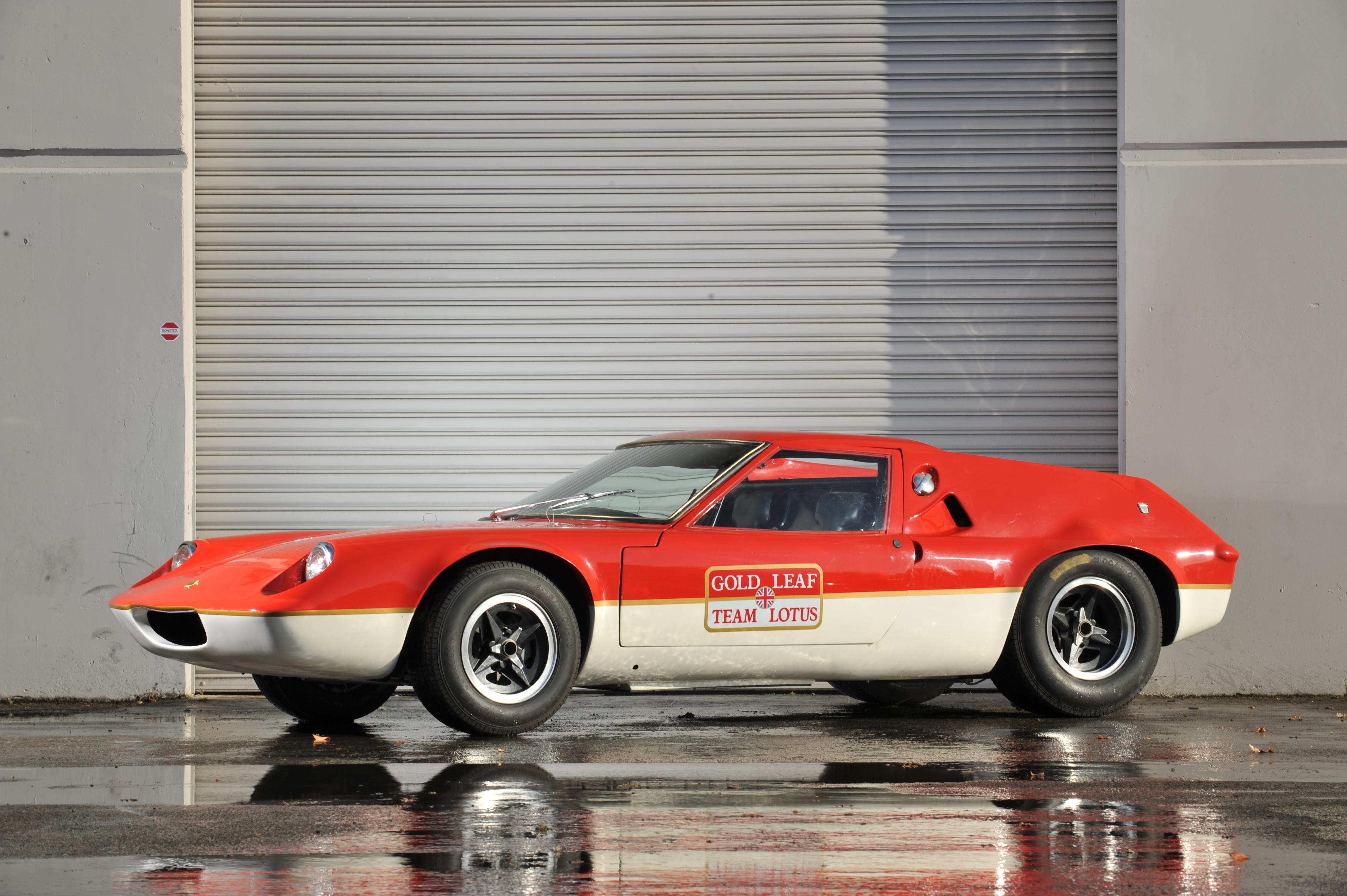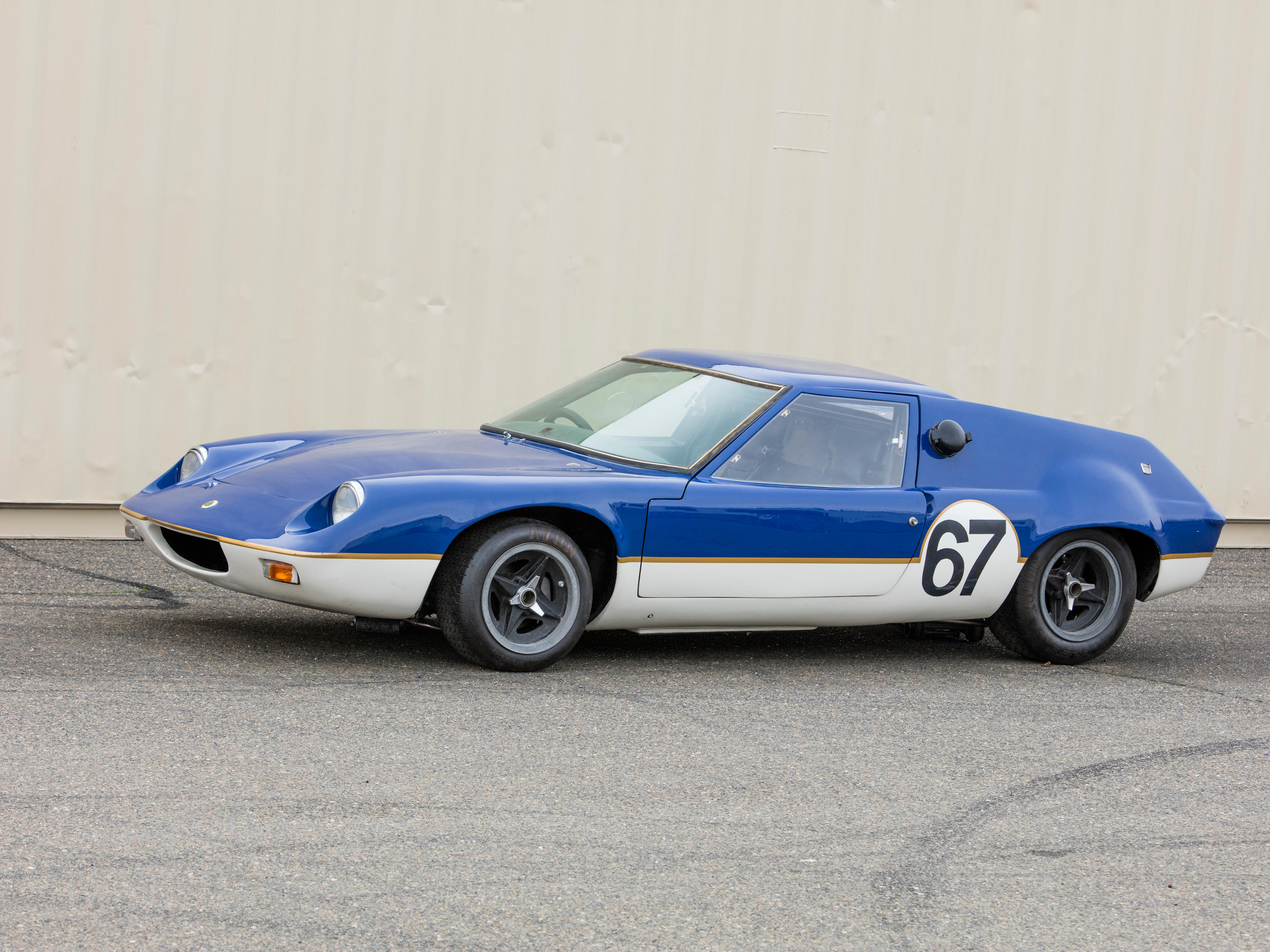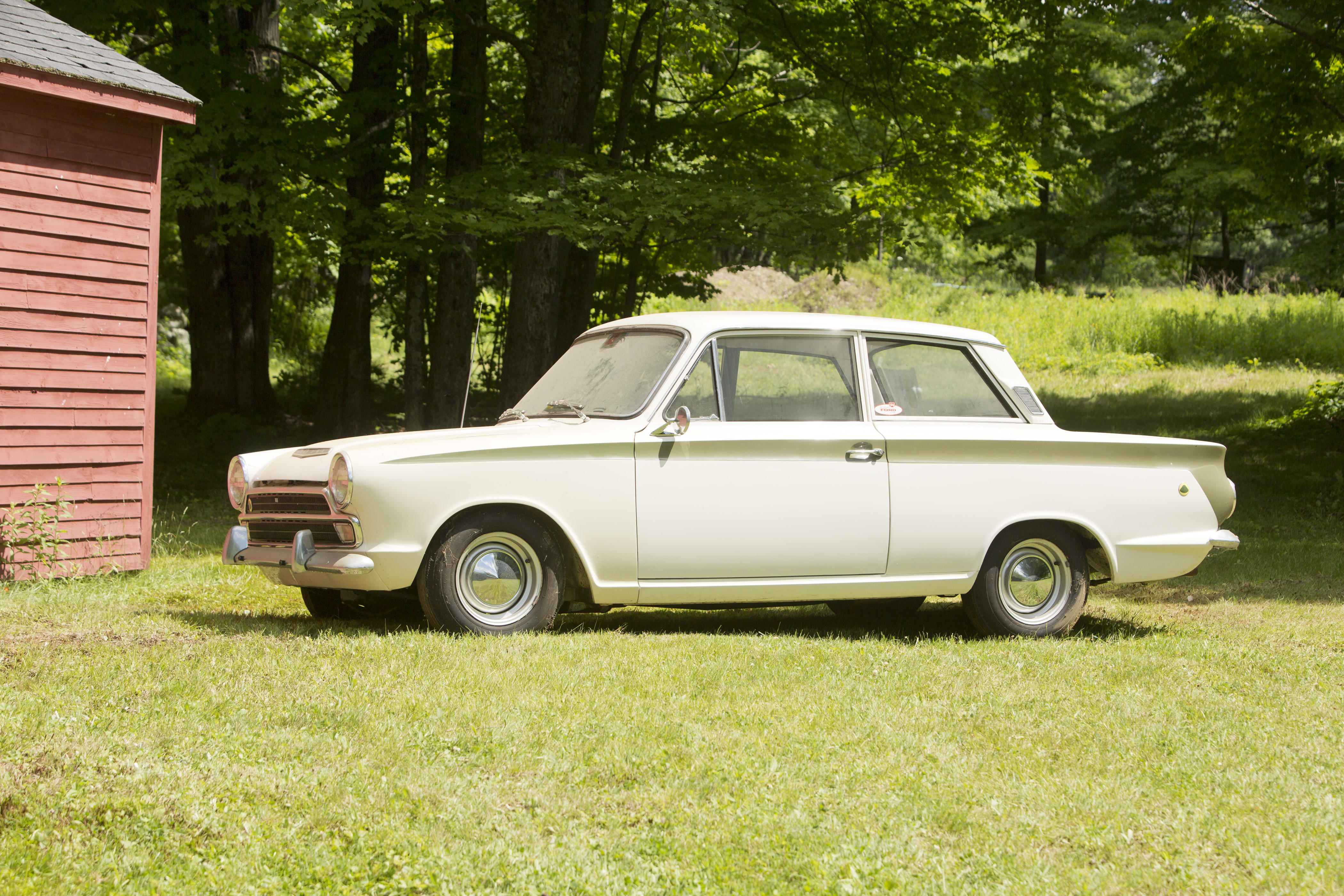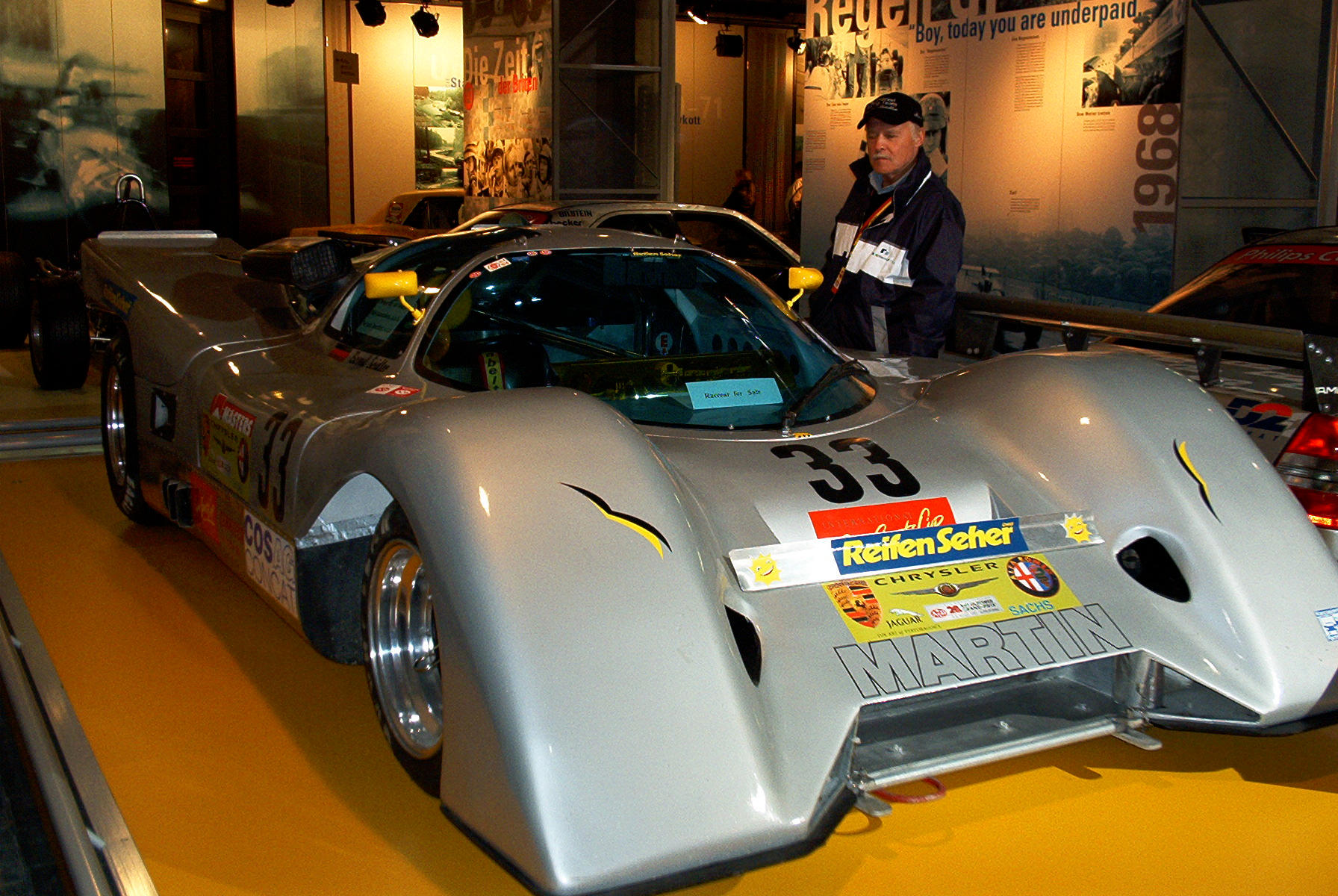Having been responsible for some of the most successful mid-engined Formula 1 designs of the early 1960s - cars that took Jim Clark to two World Championships - it is hardly surprising that Colin Chapman eventually applied the concept to the Lotus road car range. Introduced in 1966, the Type 46 Europa was intended to replace the Seven in the Lotus line up, although in actual fact it never did. Like its Elite and Elan predecessors, the Europa retained Lotus’s well-proven steel backbone chassis and was powered by the 1.6-liter four-cylinder ohv engine of the Renault 16, which was mounted behind the driver and ahead of the rear wheels. Although common on the racetrack, this arrangement was rare among contemporary road cars: only Lamborghini and Matra offered true mid-engined (as opposed to rear-engined) production models at that time. Lotus’ customer racecar division – Lotus Components Ltd – lost no time in exploiting this potential advantage over the Norfolk firm’s rivals, introducing the Europa’s competition derivative - the Type 47 GT - towards the end of 1966. The 47’s basic layout remained the same as that of the Europa, albeit with a lightened chassis and a more advanced form of independent rear suspension incorporating magnesium uprights from the Lotus 59 F2/F3 car, while a Cosworth-developed version of the 1.6-liter Lotus twin-cam engine (as found in the Elan and Ford Lotus Cortina) replaced the Renault. Fitted as standard with Tecalemit-Jackson fuel injection, this unit delivered its 165bhp via a Hewland FT200 transaxle complete with limited-slip differential. Lighter than the road car’s, the fiberglass bodywork featured slightly flared front wheelarches to accommodate wider rubber; wheel sizes (at first) being 13”x7½” at the front, 13x”8½” at the rear. The Lotus 47 made its competition debut at the Brands Hatch Boxing Day meeting in 1966, when John Miles, driving the works Lotus Components entry, won the sports/GT race outright, beating a field of Ferraris, Cobras, E-Types, etc. Miles went on to win eight more UK events in 1967, plus scoring a class victory at the Brands Hatch round of the World Endurance Championship with co-driver Jackie Oliver. For the 1968 season the Type 47 was homologated as a sports car (rather than a GT) under the FIA’s Group 4 regulations that required that a minimum of 50 cars had been built, although Lotus is thought to have produced only 30-or-so by this time. Team Lotus’s Formula 1 operation had acquired sponsorship from John Player’s ‘Gold Leaf’ brand for ’68, and the extension of this sponsorship to the sports car team saw the Type 47s decked out in the same distinctive livery as the works F1 cars. John Miles and Jackie Oliver were retained as the team’s two main drivers, with others drafted in to assist at the longer distance events. It would turn out to be another successful season: Miles won the 2-Liter class in the John Player Trophy at Silverstone and finished 2nd in the same meeting’s International event, while Oliver won his class at Brands Hatch and Croft. Privately entered Type 47s achieved numerous successes at lesser events throughout the season. Resplendent in Gold Leaf Team Lotus livery, this is a very attractive example of Colin Chapman’s Lotus 47 GT. Chassis number ‘85’ has been recognized as a genuine Type 47 GT by the Historic Lotus Registrar, and as such is a rare survivor of this most charismatic and historic Lotus competition coupé. Fortunately for today’s collector, this car’s early competition career cannot have been too rigorous as it retains its original chassis, still bonded to the fiberglass body, and is as strong as the day it left the factory. (Many 47s have had the chassis cut out of the body because of corrosion or crash damage and very few survive in their original form). The car was purchased in the UK in the early 1980s and is offered fresh from a recently finished complete restoration to perfect condition. Ready for museum display or ‘vintage’ racing, it
Having been responsible for some of the most successful mid-engined Formula 1 designs of the early 1960s - cars that took Jim Clark to two World Championships - it is hardly surprising that Colin Chapman eventually applied the concept to the Lotus road car range. Introduced in 1966, the Type 46 Europa was intended to replace the Seven in the Lotus line up, although in actual fact it never did. Like its Elite and Elan predecessors, the Europa retained Lotus’s well-proven steel backbone chassis and was powered by the 1.6-liter four-cylinder ohv engine of the Renault 16, which was mounted behind the driver and ahead of the rear wheels. Although common on the racetrack, this arrangement was rare among contemporary road cars: only Lamborghini and Matra offered true mid-engined (as opposed to rear-engined) production models at that time. Lotus’ customer racecar division – Lotus Components Ltd – lost no time in exploiting this potential advantage over the Norfolk firm’s rivals, introducing the Europa’s competition derivative - the Type 47 GT - towards the end of 1966. The 47’s basic layout remained the same as that of the Europa, albeit with a lightened chassis and a more advanced form of independent rear suspension incorporating magnesium uprights from the Lotus 59 F2/F3 car, while a Cosworth-developed version of the 1.6-liter Lotus twin-cam engine (as found in the Elan and Ford Lotus Cortina) replaced the Renault. Fitted as standard with Tecalemit-Jackson fuel injection, this unit delivered its 165bhp via a Hewland FT200 transaxle complete with limited-slip differential. Lighter than the road car’s, the fiberglass bodywork featured slightly flared front wheelarches to accommodate wider rubber; wheel sizes (at first) being 13”x7½” at the front, 13x”8½” at the rear. The Lotus 47 made its competition debut at the Brands Hatch Boxing Day meeting in 1966, when John Miles, driving the works Lotus Components entry, won the sports/GT race outright, beating a field of Ferraris, Cobras, E-Types, etc. Miles went on to win eight more UK events in 1967, plus scoring a class victory at the Brands Hatch round of the World Endurance Championship with co-driver Jackie Oliver. For the 1968 season the Type 47 was homologated as a sports car (rather than a GT) under the FIA’s Group 4 regulations that required that a minimum of 50 cars had been built, although Lotus is thought to have produced only 30-or-so by this time. Team Lotus’s Formula 1 operation had acquired sponsorship from John Player’s ‘Gold Leaf’ brand for ’68, and the extension of this sponsorship to the sports car team saw the Type 47s decked out in the same distinctive livery as the works F1 cars. John Miles and Jackie Oliver were retained as the team’s two main drivers, with others drafted in to assist at the longer distance events. It would turn out to be another successful season: Miles won the 2-Liter class in the John Player Trophy at Silverstone and finished 2nd in the same meeting’s International event, while Oliver won his class at Brands Hatch and Croft. Privately entered Type 47s achieved numerous successes at lesser events throughout the season. Resplendent in Gold Leaf Team Lotus livery, this is a very attractive example of Colin Chapman’s Lotus 47 GT. Chassis number ‘85’ has been recognized as a genuine Type 47 GT by the Historic Lotus Registrar, and as such is a rare survivor of this most charismatic and historic Lotus competition coupé. Fortunately for today’s collector, this car’s early competition career cannot have been too rigorous as it retains its original chassis, still bonded to the fiberglass body, and is as strong as the day it left the factory. (Many 47s have had the chassis cut out of the body because of corrosion or crash damage and very few survive in their original form). The car was purchased in the UK in the early 1980s and is offered fresh from a recently finished complete restoration to perfect condition. Ready for museum display or ‘vintage’ racing, it















Testen Sie LotSearch und seine Premium-Features 7 Tage - ohne Kosten!
Lassen Sie sich automatisch über neue Objekte in kommenden Auktionen benachrichtigen.
Suchauftrag anlegen